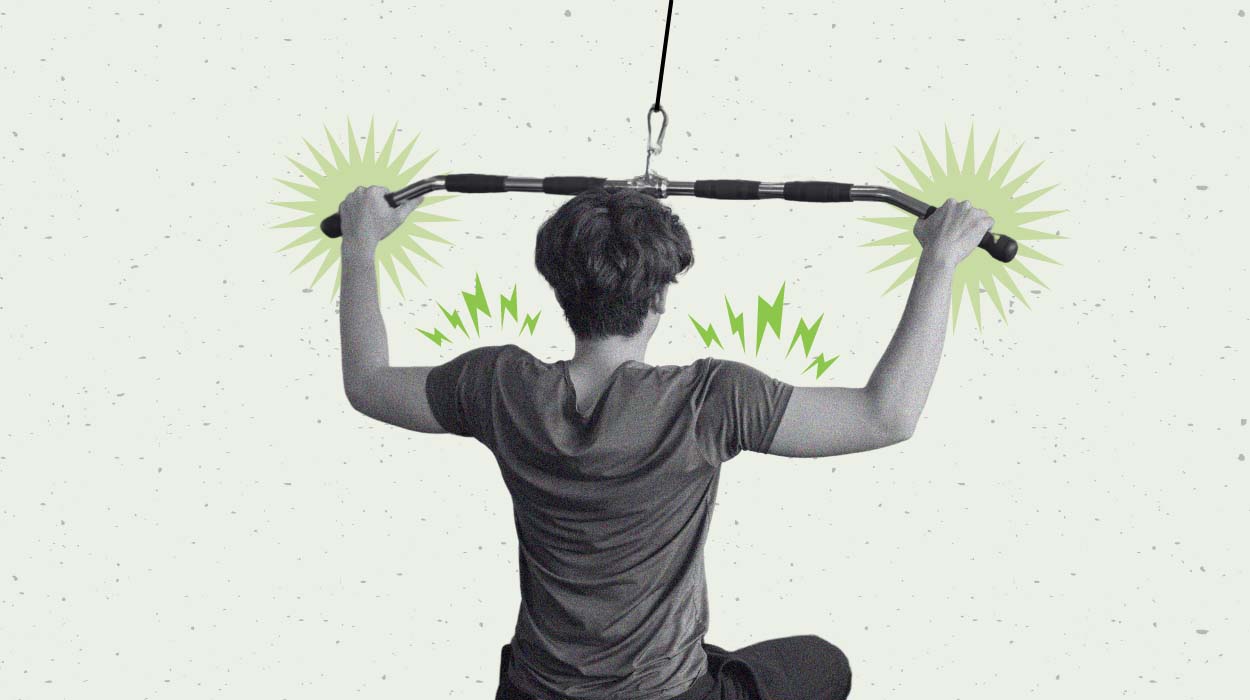
Sculpted shoulders are prized pieces of the physique that bring attention to the upper body figure. Everyone is after either the extreme definition or the highly coveted boulder shoulders. To make either one of these scenarios a reality, you need to focus on the deltoids.
There are three shoulder muscles known collectively as the deltoids or the delts. They specifically consist of the anterior, lateral, and posterior heads. The anterior head is on the front of the shoulder, the lateral head is on the side and the posterior is on the back. To hit the posterior segment, you need to focus your attention on rear delt exercises.
In this article, we will cover the best workouts for rear delts, as well as some rear delt exercises with dumbbells, which add a convenience element and can keep you excited about your workouts.
Best Rear Delt Exercise
Because of where the Rear Delts are located, most exercises are performed with dumbbells and other free weights. Some of the best rear delt exercises include:
Best Rear Delt Exercises
Wide Grip Inverted Rows
This exercise not only strengthens the rear deltoids but also engages the upper back, traps, and rhomboids. It enhances shoulder stability and posture while targeting the often-neglected rear deltoid muscles, ultimately contributing to a balanced and well-defined upper body. Including Wide Grip Inverted Rows in your routine can lead to improved posture, reduced risk of shoulder injuries, and a more symmetrical and sculpted rear deltoid region.
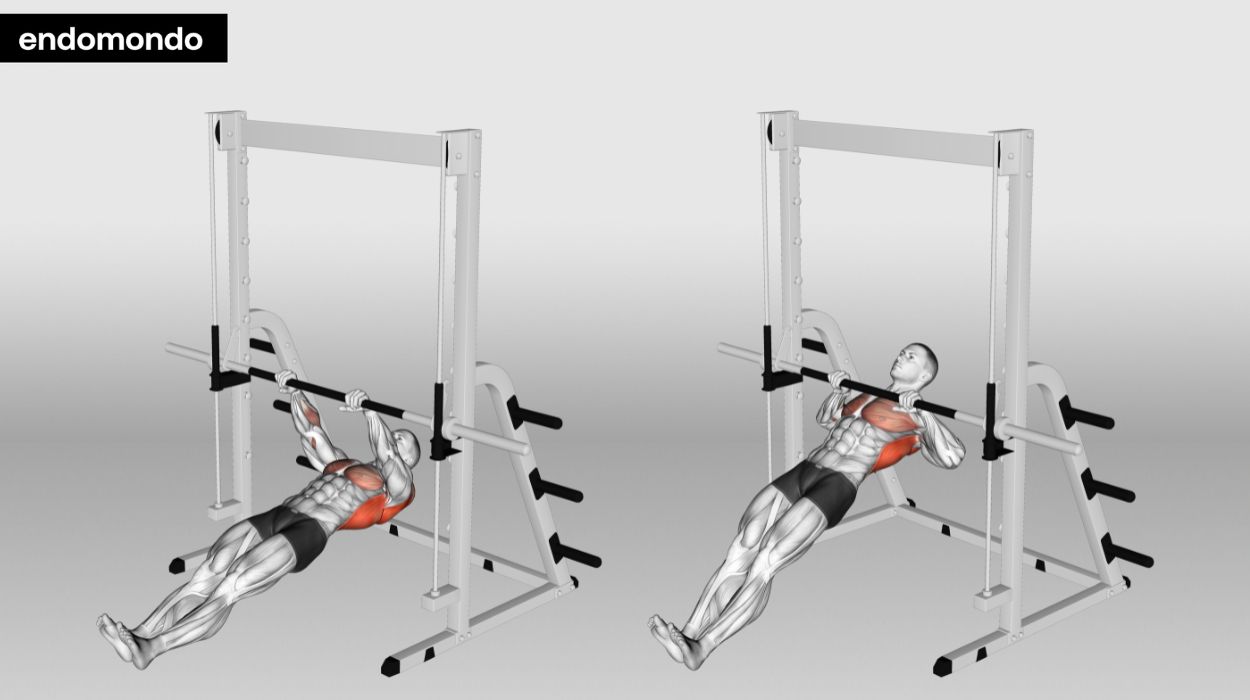
How to do:
- Set up a secure bar at waist height.
- Lie underneath, and grab the bar with a wide grip.
- Lift your chest, squeeze your shoulder blades, and pull your chest toward the bar.
- Lower your body with control, maintaining tension in your back and rear deltoids.
Tips:
- Grip the bar wider than shoulder-width apart to target the rear deltoids effectively. This hand placement engages the muscles of the upper back and promotes rear delt activation.
- As you pull your chest towards the bar, focus on squeezing your shoulder blades together. This ensures maximum engagement of the rear deltoids and upper back muscles.
- Lower your body back down in a controlled manner, maintaining tension in the rear deltoids and upper back throughout the entire range of motion. Avoid swinging or using momentum for optimal results.
Optimal Sets and Reps: 3 sets of 10 to 12 reps
Reverse Pec Deck Flyes
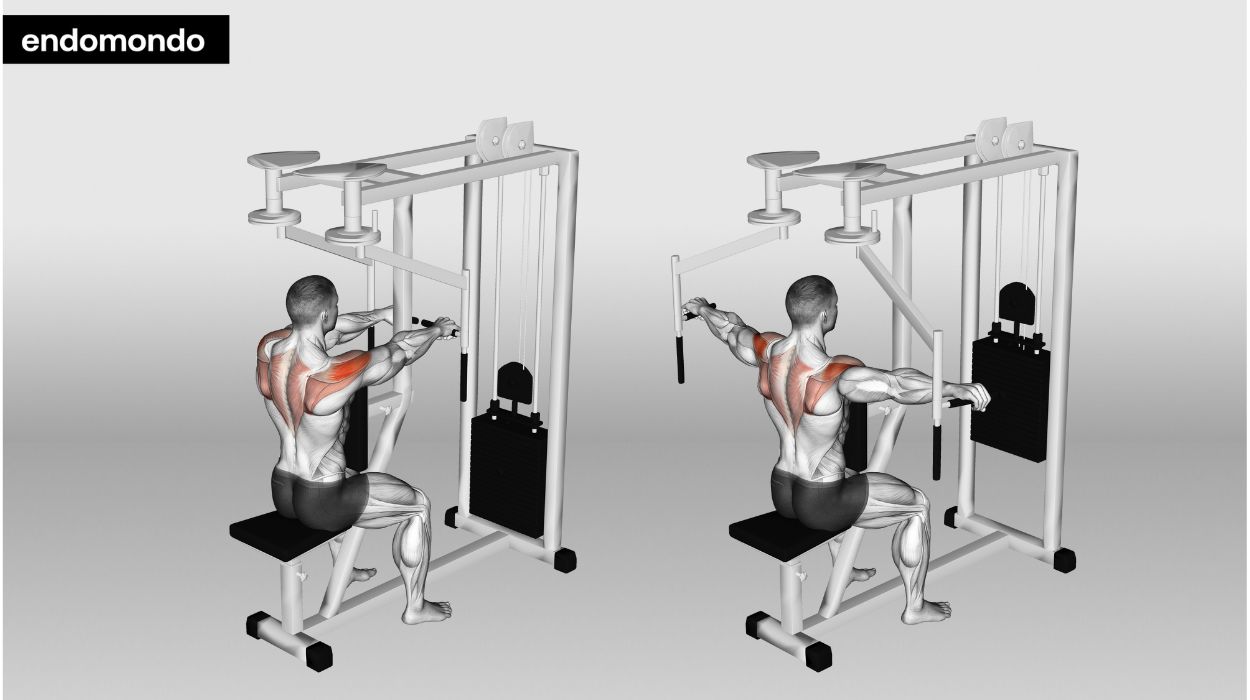
This isolation exercise effectively targets the rear deltoid muscles, helping to improve shoulder definition and posture. Strengthening the rear delts, can also enhance overall shoulder stability and reduce the risk of injuries, making it valuable for anyone looking to develop a well-rounded upper body. Incorporating Reverse Pec Deck Flyes into your routine can contribute to balanced shoulder development and an aesthetically pleasing, sculpted appearance in your upper back and shoulders.
How to do:
- Adjust the pec deck machine’s seat and handles to your comfort and grasp the handles.
- Sit with a straight back, chest up, and feet flat on the floor.
- Exhale as you squeeze your shoulder blades together and bring the handles behind you.
- Inhale as you return to the starting position with a controlled motion and repeat.
Tips:
- Sit with your chest against the pad, and maintain a slight bend in your elbows. Focus on squeezing your shoulder blades together during the movement for maximum rear delt engagement.
- Avoid using excessive momentum when performing Reverse Pec Deck Flyes. Use a weight that allows you to complete each repetition with proper form and controlled motion.
- Aim for a full range of motion, allowing your arms to open wide without locking your elbows at the end of each repetition. This ensures that you engage the rear deltoids fully and minimize strain on other muscle groups.
Optimal Sets and Reps: 3 sets of 12 to 15 reps
Standing Dumbbell External Rotations
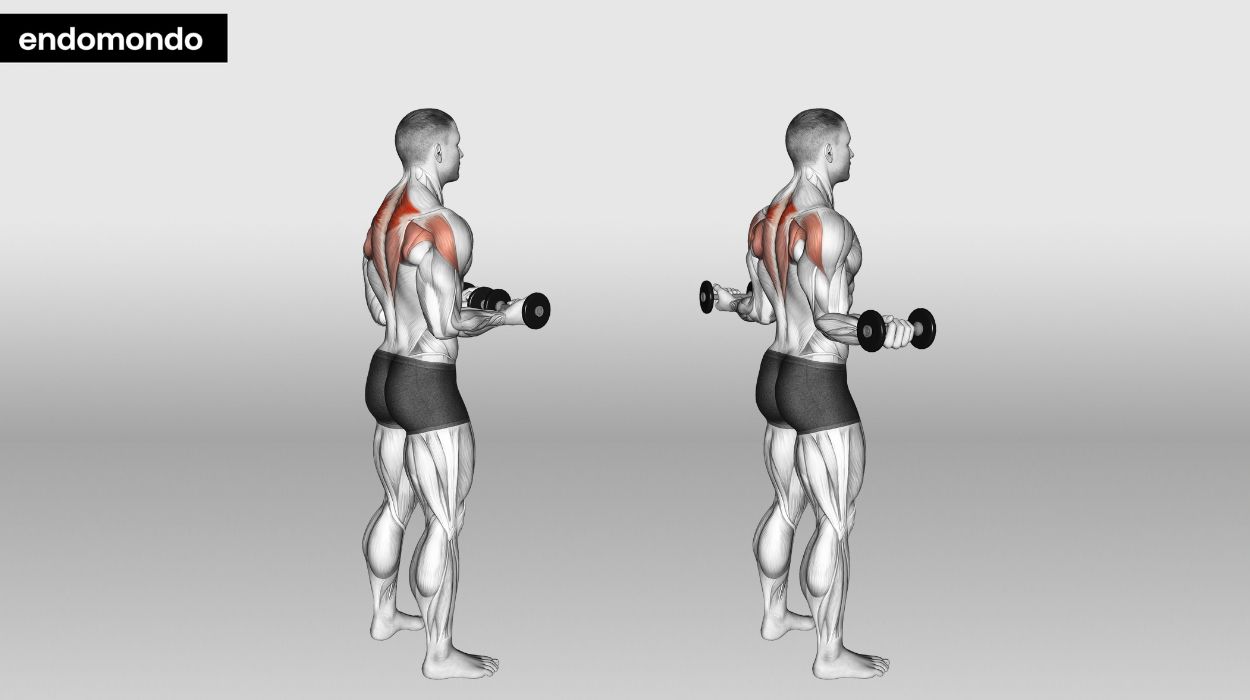
This exercise specifically targets the rear deltoid muscles, enhancing shoulder strength and stability. By isolating the rear delts, it contributes to better posture, reduces the risk of shoulder injuries, and creates a balanced shoulder appearance. Incorporating Standing Dumbbell External Rotations can help you achieve a well-rounded and sculpted upper body while improving overall shoulder health and functionality.
How to do:
- Stand with feet shoulder-width apart, holding a dumbbell with both hands at chest height.
- Keep elbows bent 90 degrees and close to your body.
- Rotate the dumbbell away from your body, extending your arms.
- Slowly return to the starting position and repeat.
Tips:
- Maintain an upright posture with your feet shoulder-width apart. Keep your core engaged and your back straight to ensure your shoulder joint is stable throughout the movement.
- Lift the dumbbell with a slow and controlled motion, focusing on the rear deltoid’s engagement. Avoid using momentum or swinging the weight to prevent strain or injury.
- Keep your elbow close to your body and at a 90-degree angle while rotating the dumbbell. This ensures you’re effectively targeting the rear deltoid and minimizing strain on other muscle groups.
Optimal Sets and Reps: 3 sets of 12 to 15 reps
Benefits Of Doing Rear Delt Exercises
There is a motivation factor inherent in all exercises. When it comes to doing rear delt exercises, the motivation lies within the benefits they can offer.
Strength
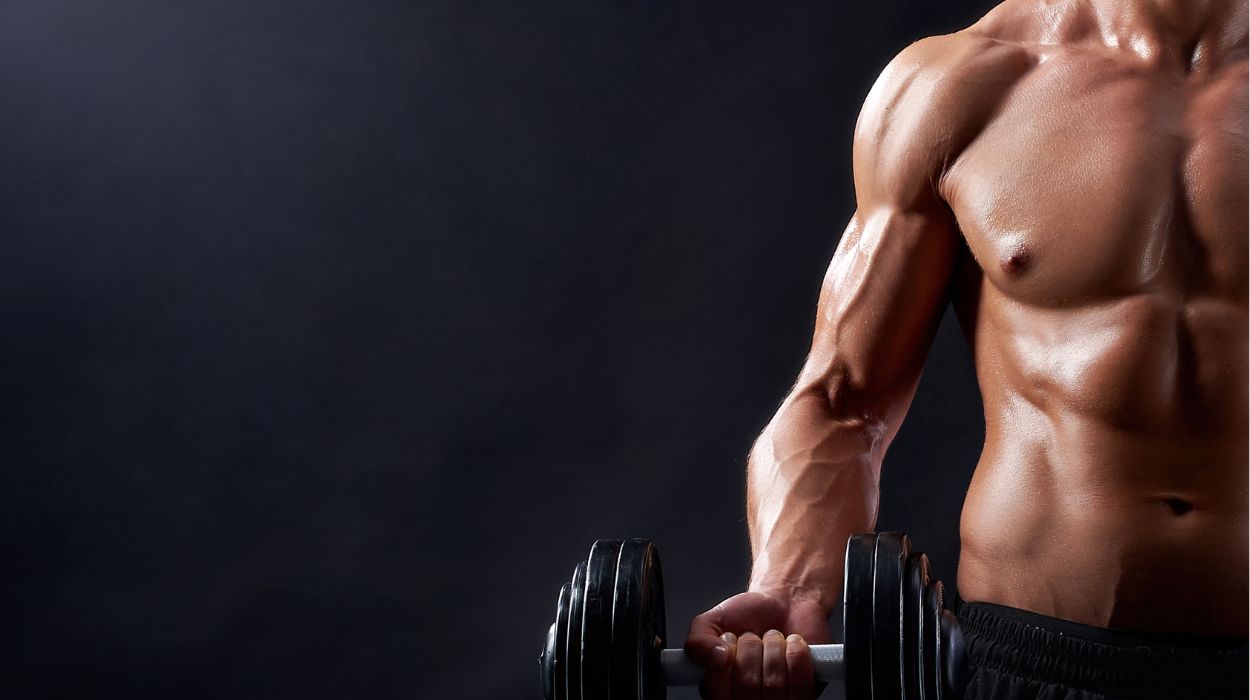
Building strong rear delts, also known as the posterior deltoids, can make daily tasks easier to do. It can also improve sports performance, especially in sports requiring any backhand motion.
Injury Prevention
The posterior deltoids span the back of the upper shoulder blades. Keeping these muscles strong will promote shoulder joint stability and help prevent injuries from occurring.
Improved Posture
If you are doing a lot of chest work without any antagonizing pull from the rear delts, you can end up with your shoulders rounding forward, putting awkward stress on the joint and leading to pain and problems down the road. But strong rear delts correct this problem and improve posture.
Boosted Confidence
Strong rear delts help you make physical activities and daily chores like raking leaves, chopping firewood and shoveling snow look easy. As a bonus, it will add size and definition to your shoulders, giving you that coveted tone.
Carryover Effect
By strengthening the rear delts and deeper rotator cuff muscles, you will actually be able to perform other pulling exercises more efficiently, which can create more muscle gain as you will ultimately be able to do higher weight with proper form.
Tips For Doing Rear Delt Exercises
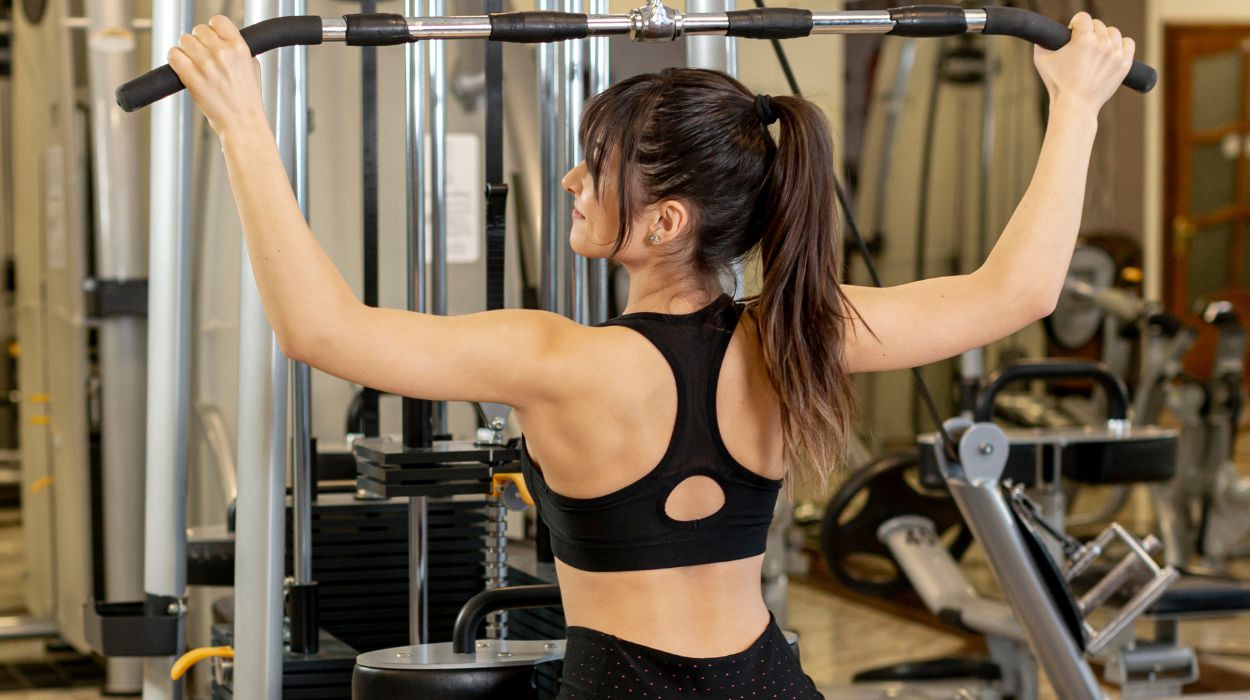
When trying to incorporate rear delts into your exercise regimen, there are a few important things to consider to help you get the most out of your workouts.
Use Light Weight
Whether you are doing rear delt dumbbell exercise rows, a shoulder extension, or reverse fly with a resistance band, the rear delts are small muscle groups, so they do not require heavyweight in order to be adequately targeted. If you use a resistance that allows you to perform 12 to 15 reps with good form, you will get all the work you need.
Use A Full Range Of Motion And Hold Your Contractions For A Full Second
A full range of motion improves shoulder mobility and it involves moving a weight the entire length of a joint. This is a very important aspect of rear delt targeting, especially with dumbbell exercises. For example, when doing standing dumbbell external rotations, do not stop just short when moving the weights up. Stop only when you have moved to a full range of motion.
Incorporate Proper Rest Into Your Training
Take at least 2 days off between rear delt workouts and rest accordingly between sets. For the latter, aim for 45 to 60 seconds.
Have A Spotter Or Training Partner On Hand If Necessary
According to the CDC,[1] working out with a training partner can keep you more motivated and consistent with your workouts. You can expect to have greater gains because of consistency and the ability to utilize heavier weights when using a spotter.
Conclusion
Rear delt dumbbell exercise can carry a lot of “weight” in the world of upper body training. If you want to build big, sculpted muscles or simply want to prevent injury or bad posture, rear delt training is an absolute must for your workout routine.
It just takes small steps to make solid progress. Working your shoulders as little as one or two days a week is sufficient time to see the results you desire. Remember that it’s actually during the recovery process that your muscles grow.
Focus your attention on the basics, utilizing the exercises discussed above, and never lift more than you can do safely with the correct form. Results only come with a consistent routine, attention to form, and consideration for safety, but if you put in the effort, the payoff makes it all worthwhile.
Frequently Asked Questions
There are plenty of things you can do to strengthen the rear delts with household items and the weight of your body. Wall angels, for example, can be done by standing with your back to a wall, moving the backs of your arms against the wall, and sliding them up in the shape of an angel’s wings. Pressing movements and the reverse fly can be done with any object that has weight.
You CAN get big delts, but you should work all parts of the shoulders, which also include the lateral and front delts.
Since most rear deltoid drills are isolation exercises, which involve one joint moving, you should reserve them for the end of your upper body shoulder workouts. This way you will not tire them out when they are needed to assist with compound drills like military presses, bench presses, and rows.
Resources
- CDC (2022). 3 Reasons to Work Out With a Friend. [online] Centers for Disease Control and Prevention. Available at: https://www.cdc.gov/diabetes/library/spotlights/workout-buddy.html.




